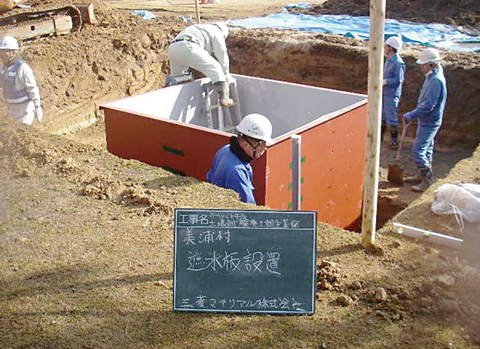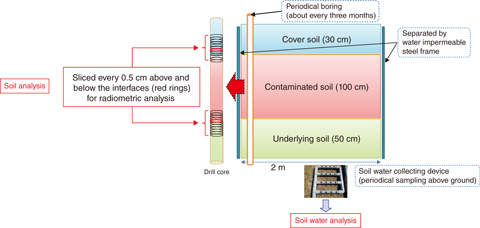
Fig.1-38 Preparation at a site in Miho village

Fig.1-39 Three-layered investigation area separated by a water-impermeable steel plate
Previous field studies performed in China and Canada have predicted that radioactive cesium (Cs) would hardly migrate into surrounding soils and groundwater from soils contaminated by the accident at the TEPCO’s Fukushima Daiichi NPS if they were to be buried and covered with clean local soils. This study verifies the prediction by performing in situ migration experiments over a year in a public park in Miho Village, Ibaraki Prefecture and in two public parks in Misato City, Saitama Prefecture.
Contaminated surface soils (to a depth of 3 cm) were gathered and buried in a 1–1.3-m-deep trench (Fig.1-38) and sprinkled with water to accelerate the radioactive Cs migration. In order to let the water flow through the contaminated soil, a 2 m × 2 m area in the burial site was separated as an investigation area by a water-impermeable steel frame. 3200–3900 mm of water was sprinkled, which is equivalent to 8–10 years of natural infiltration. Vertical borings were performed every three months to analyze the radioactive Cs distribution in the soil cores, as shown in Fig.1-39. The concentration of Cs-137 (137Cs) is 1000–3000 Bq/kg in the contaminated soil and less than 40 Bq/kg in the cover and underlying soils. The water that flowed through the contaminated soil was analyzed after sampling by a soil-water-collecting device that had been installed at the bottom of the underlying soil. Migration of radioactive Cs was not observed from these analyses.
Laboratory column and sorption experiments using the soil samples revealed that the radioactive Cs hardly leaches out of the soil and even if does, it will be adsorbed on surrounding soils and barely migrate through the soil layer (at a rate as slow as one 7000th of the groundwater-flow rate). Although the experiments were terminated after a year, simulation of 137Cs migration for 100 years by an advection–diffusion model showed that 137Cs migrated slightly and decayed out within the contaminated soil (the maximum concentration at a distance of 10 cm from the contaminated soil will be 1% of the concentration in the contaminated soil).
These results prove that the migration rate of radioactive Cs is low in soils in Japan and that the range of migration is limited. On-site burial, by which contaminated surface soil is removed from parks and accumulated in a trench on site then being backfilled with clean local soils, is an effective method for preventing direct exposure from the contaminated soil and contamination of the groundwater. It is a candidate disposal measure for contaminated soil.
The JAEA technically supported the Ministry of the Environment of Japan (MOE) and created these results.